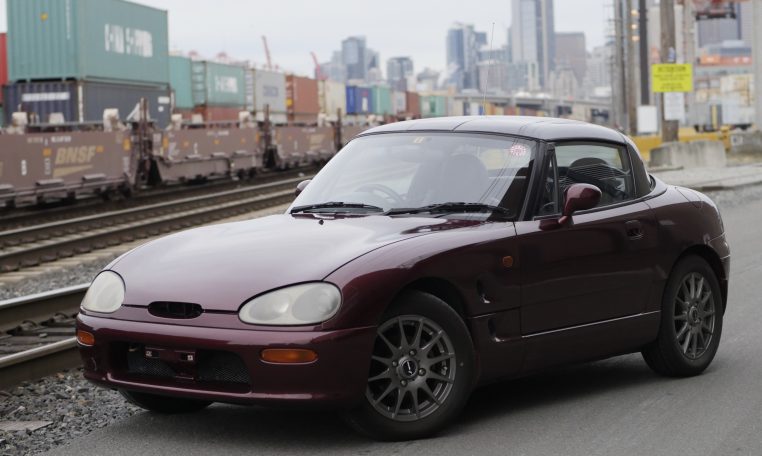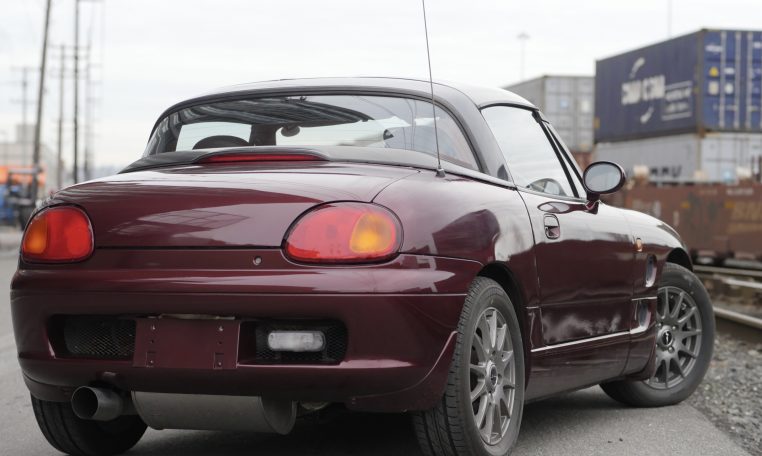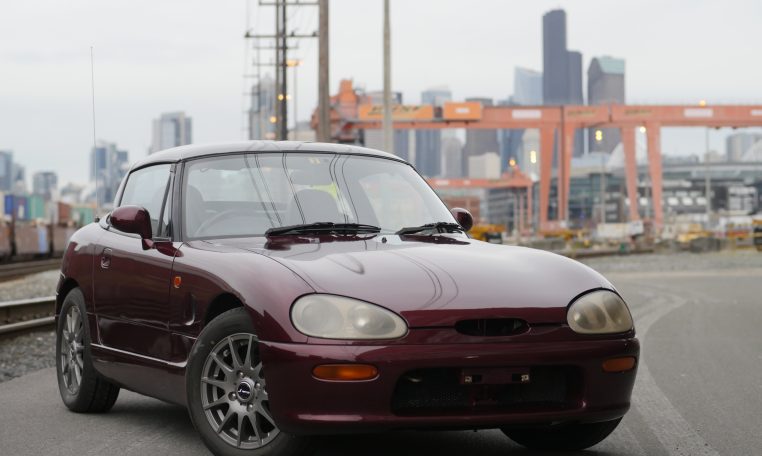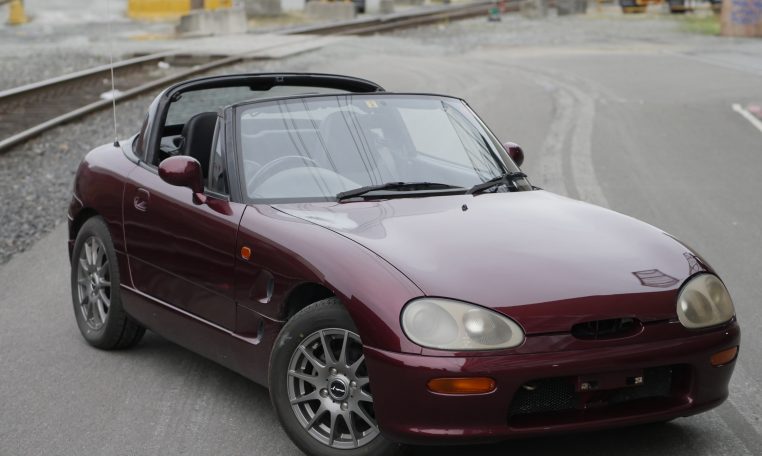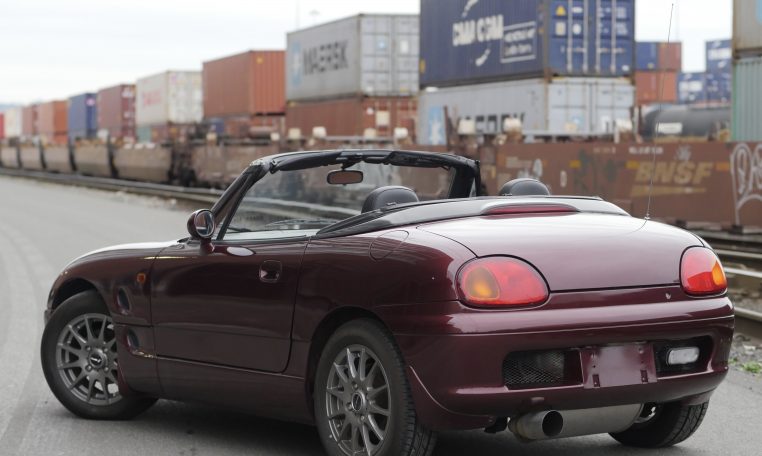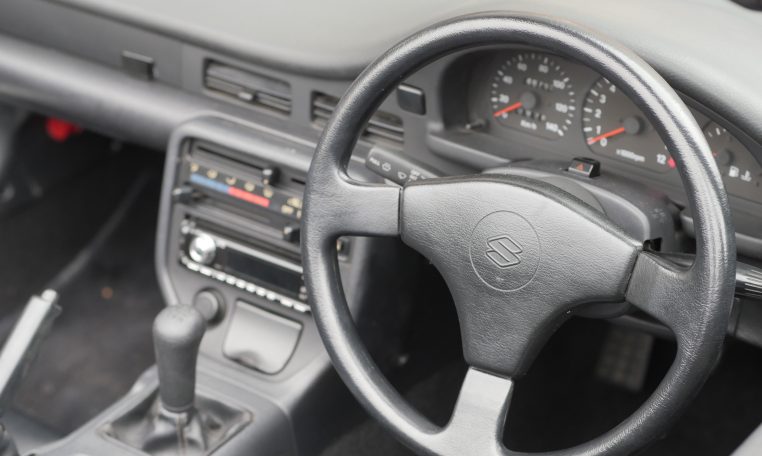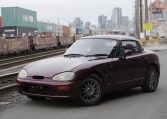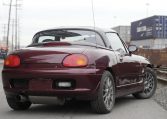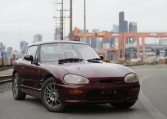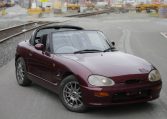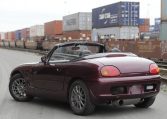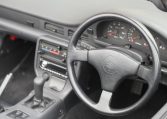1992 Suzuki Cappuccino
Maroon 5-speed turbo 660ccSODO Motorworks loves the early 1990’s Kei sportscars having brought in dozens of Honda Beats, Mazda AZ1 and Suzuki Alto and Mitsubishi Dangan. Our first Suzuki Cappuccino have arrived and they are a lot of fun. Known for their relatively high output and excellent driving dynamics – on the road and on the track.
This Maroon car is in good overall condition and runs and drives quit well. Lots of fun for a modest price.
More info from Wikepedia: The Suzuki Cappuccino is a small 2-door, 2-seater detachable hardtop minicar produced by Suzuki Motor Corporation. The vehicle was designed to meet Kei car specifications for lower tax and insurance in Japan. Weighing 725 kg (1,598 lb), the Cappuccino is powered by a turbocharged, three-cylinder, 657 cc DOHC engine (just under the 660cc maximum displacement allowed for a Kei car). Its dimensions also conformed to Kei car regulations on length and width, being 3,295 mm (129.7 in) long and 1,395 mm (54.9 in) wide.
Front-rear weight distribution is claimed to be 50/50% when both seats are occupied. Layout is front mid-engined and rear-wheel drive. The hood, roof, roll bar and lower front guard panels are aluminium.
Three removable roof panels mean that the car can be used as a closed coupé; T-top; targa; or, on retraction of the rear window and roll bar, a full convertible. Roof panels stow in the trunk (taking almost all the luggage space), and the rear window/rollcage assembly retracts into the body behind the seats. Unlike many convertibles of the time, the rear window is glass and wraparound, with demisting elements.
It was originally equipped with the F6A engine: later models were fitted with a K6A engine which was lighter and had chain-driven, rather than belt-driven camshafts and more torque. Both are DOHC 12-valve, inline 3-cylinder engines that were turbocharged and intercooled. Power output was a claimed 64 PS (47 kW; 63 hp) at 6500 rpm to fit under the maximum power allowed for Kei cars.
The Cappuccino featured 4-wheel disc brakes and rear wheel drive. Later versions in Japan had an early production iteration of speed-sensing electric power-assisted steering and aluminium double wishbone suspension. Production began in 1991 and ceased in 1997. The Cappuccino’s closest competitor of the time were the Autozam AZ-1, Honda Beat and the Daihatsu Leeza Spyder. (The Autozam AZ-1, Honda Beat and Suzuki Cappuccino were together called the Sporty K-Car’s ABC.)
Though this one's sold, contact us if you're interested. We may be able to locate another one for you.
